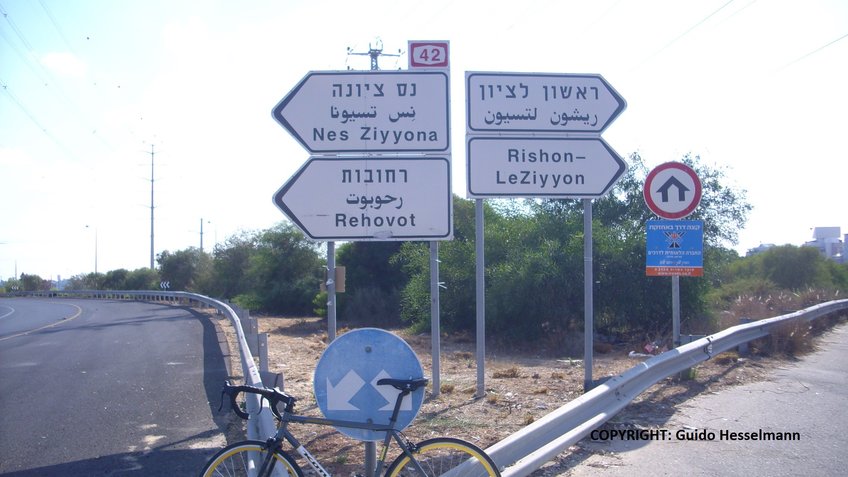
Discovering new perspectives
For 50 years, the Minerva Fellowship Programme has fostered scientific and cultural exchange between junior German and Israeli scientists. What began as science diplomacy, has evolved into a flagship initiative, nurturing the scientific relationship between the two nations.
When Otto Hahn and his delegation embarked on the first official trip to Israel by German scientists in December 1959, Hahn, then President of the Max Planck Society, could hardly have known that 14 years later, 1973, this initial visit would develop into one of the most influential and well-established fellowship programmes for young researchers.
Israel, established in 1948 in the wake of the Holocaust as a home for those who survived the Nazi regime's atrocities, initially found any connection to the newly-formed Federal Republic, let alone the idea of establishing diplomatic ties, nearly inconceivable. The initial “stretching out feelers,” as President Hahn termed the visit to Israel, was rooted solely in the realm of science, providing a neutral platform for fostering closer relations.
This first official visit by the Max Planck Society delegation to the Weizmann Institute in Rehovot near Tel Aviv – an institute dedicated on multidisciplinary science – laid the foundations for the Minerva Stiftung. This foundation, a subsidiary of the Max Planck Society, remains a cornerstone of successful science diplomacy to this day. However, it would be nearly a decade before the Minerva Stiftung launched the fellowship programme of the same name, enabling German and Israeli scientists to embark on research residencies lasting several months in each other’s respective country. This personal and direct exchange in played a pivotal role in contributing to German-Israeli rapprochement during the early years and continues to mitigate tensions and reservations.
EXPANDING HORIZONS WITH THE MINERVA PROGRAMME
The Minerva Fellowship Programme began in 1973 with ten fellows. Today, 50 years and over 2,000 German and Israeli scientists later, it is impossible to imagine German-Israeli scientific relations without the programme. It not only fosters the advancement and consolidation of cutting-edge research partnerships between the two nations, but also broadens the horizons of individual fellows in multifaceted ways. A noteworthy number of scientists chose to remain in their host countries, where they began or continued their scientific careers, found life partners, or embarked upon entirely new paths — all thanks to their fellowship experiences. Horizons expanded from both a scientific and a cultural perspective: Israelis, who due to decades of restrictions and conflict had limited personal contact with the Arab and Palestinian world, found themselves collaborating with peers from the Near and Middle East during their residencies in Germany. These encounters enabled them to gain new experiences and the chance to challenge preconceptions – in short, the opportunity to gain new perspectives that would previously have seemed unimaginable.
SOCIO-POLITICAL EVENTS INFLUENCE FELLOWSHIP NUMBERS
Looking back over the past five decades, all fellows would agree that the socio-political circumstances surrounding their residency experiences in host countries were often turbulent. Here are some examples of significant events: the outbreak of the first intifada in Israel in 1987; the fall of the inner-German border in 1989 and Germany's reunification in 1990; the assassination of the Israeli Prime Minister Yitzhak Rabin in 1995; the emergence of the second intifada in 2000, which lasted five years; the global financial crisis in 2008, and the “summer of migration” in Germany in 2015.
Social, economic, or military crises, such as the coronavirus pandemic or Russia's war of aggression against Ukraine, which impact or have impacted either the partner country or both countries involved, have an influence on the scholarship programme: they have an immediate or delayed effect on the number of applications received and the stays actually taken up.
During the early 1980s, there were around 20 percent more Israeli scientists travelling to Germany than there were German scientists travelling to Israel. This number balanced out as the 1980s unfolded. In the 1990s, the number of Israeli fellows declined to a third of the German counterparts. Since the end of the second intifada in 2005, the average number of fellows from Germany and Israel has gradually converged.
Despite the challenging conditions that the fellowship programme is continuously presented with, it remains a constant and true cornerstone inspiring German-Israeli scientific relations.
MOVING INTO THE FUTURE
In turbulent and challenging times, the Minerva Stiftung has always relied on the excellence, dedication, and motivation of its organiser, supporters, committee members and, in particular, its fellows. Looking ahead, there will be an enhanced emphasis on the latter aspect.
© Julia Radlewitz / Minerva Stiftung / Max Planck Society











